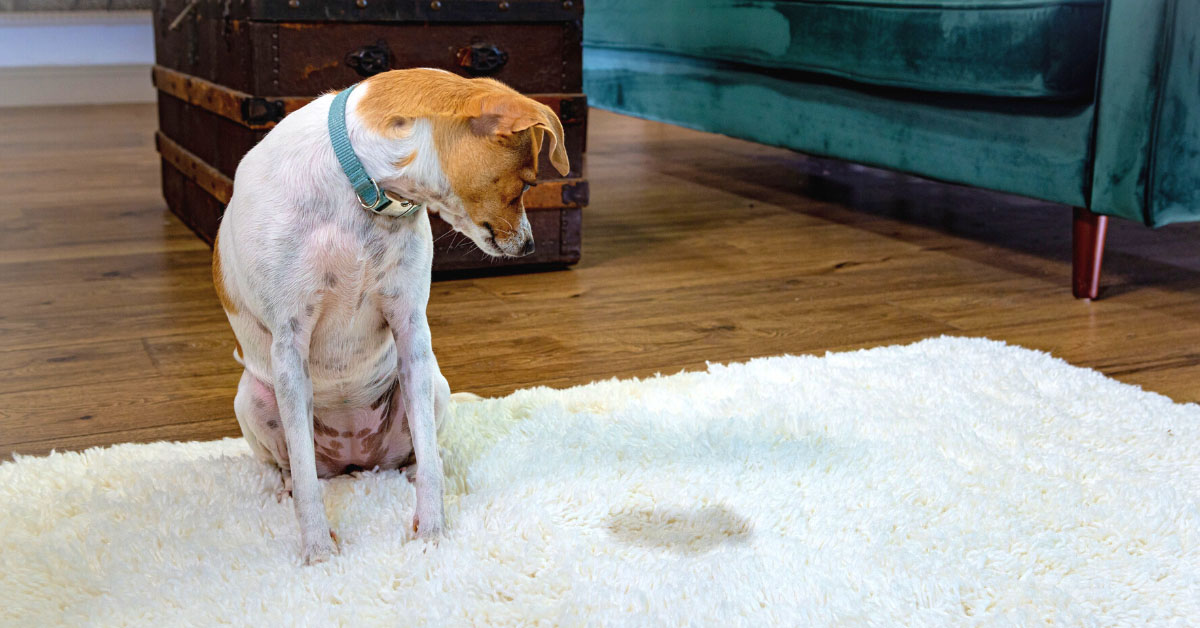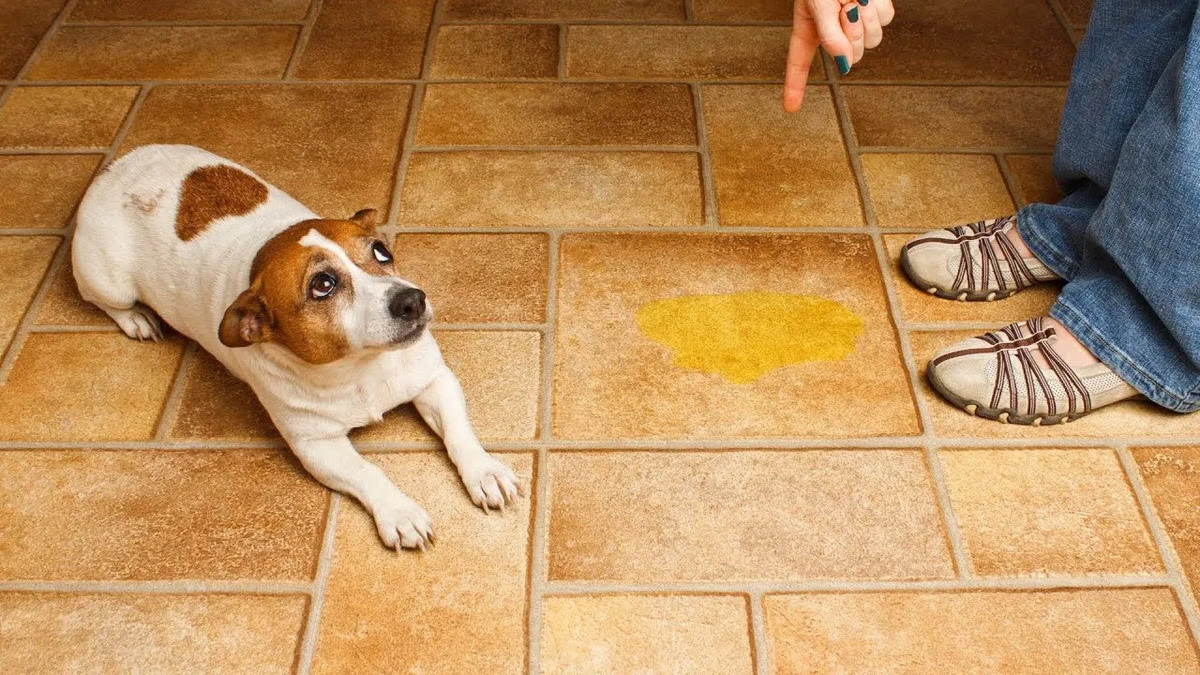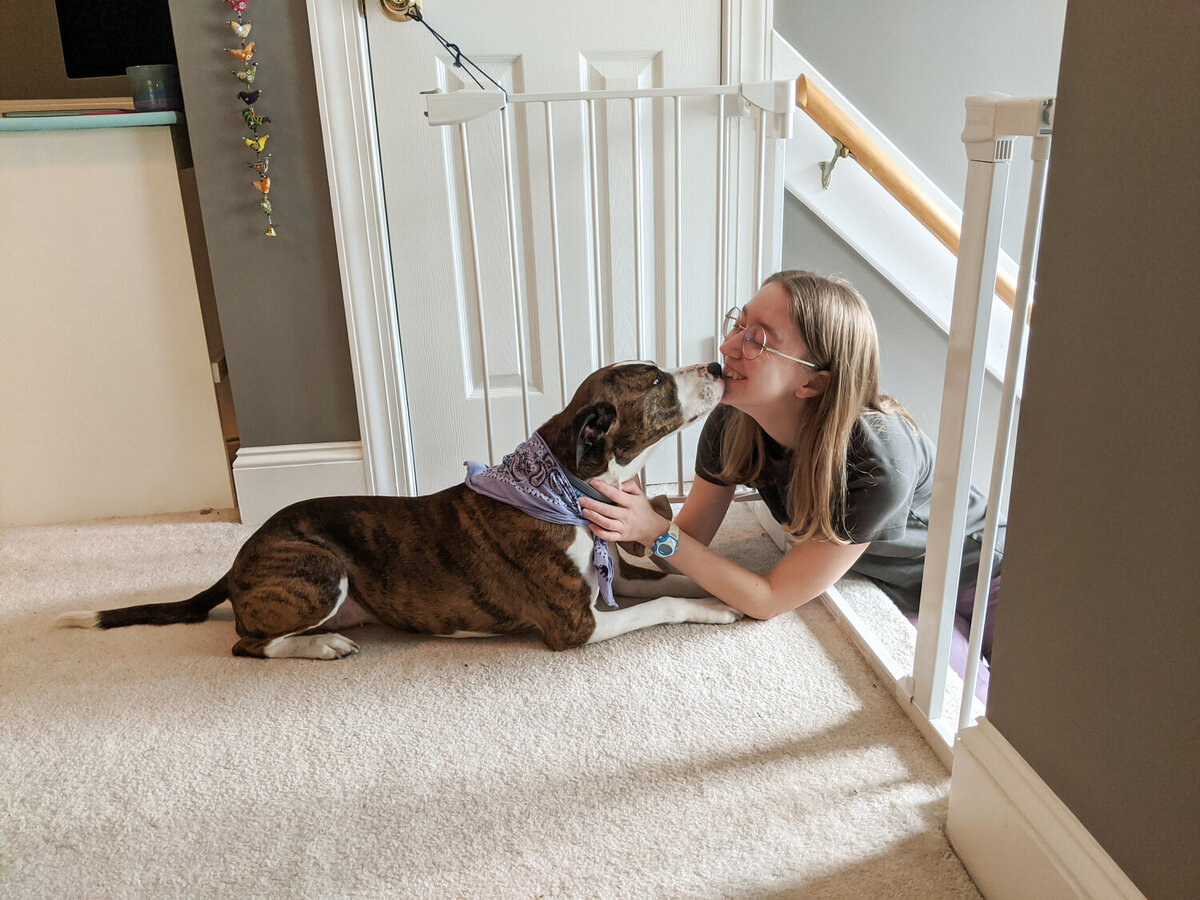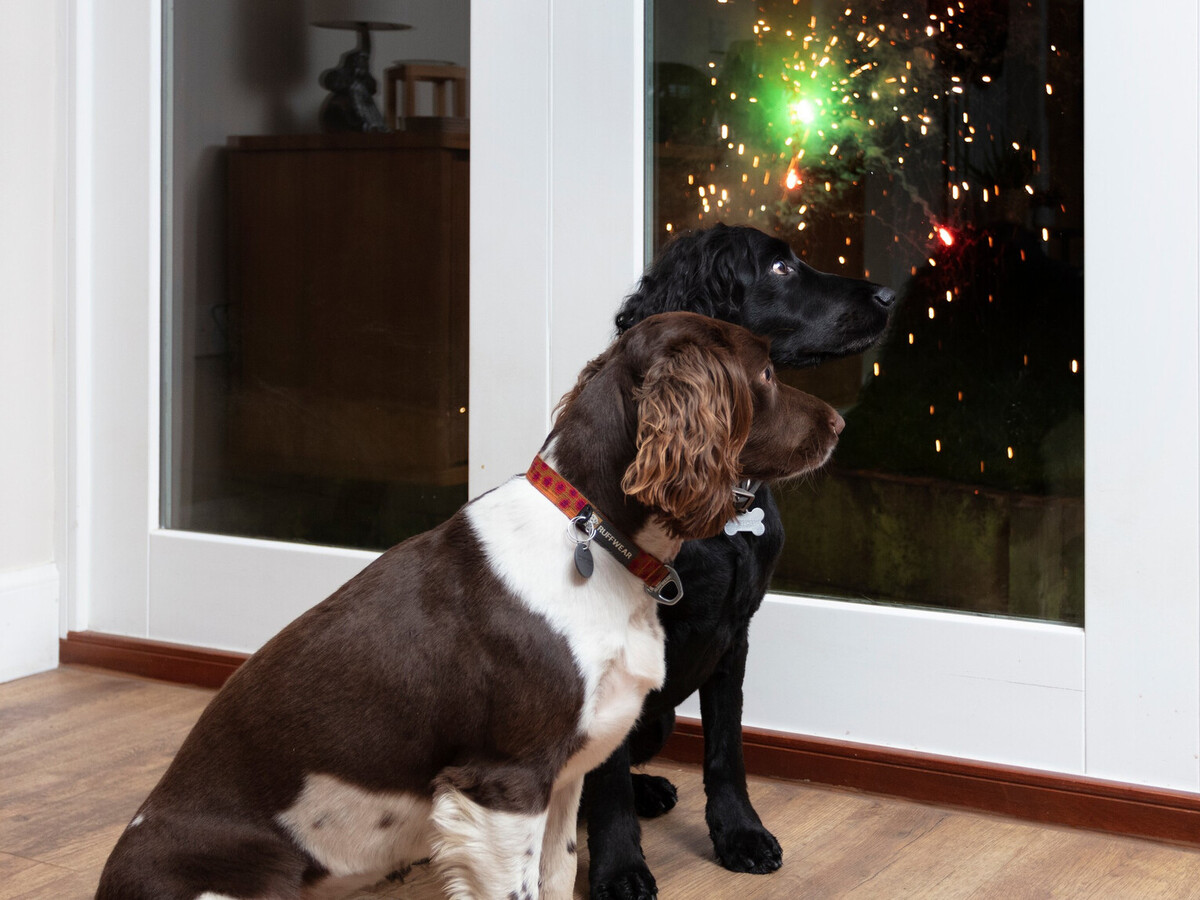Home>Health & Wellness>Behavior & Cognitive Care>How To Stop A Dog From Marking Due To Separation Anxiety


Behavior & Cognitive Care
How To Stop A Dog From Marking Due To Separation Anxiety
Published: January 30, 2024
Learn effective strategies to prevent your dog from marking due to separation anxiety. Discover behavior and cognitive care tips to address this common issue.
(Many of the links in this article redirect to a specific reviewed product. Your purchase of these products through affiliate links helps to generate commission for Pawsomeoldies.com, at no extra cost. Learn more)
Table of Contents
Understanding the Root Cause of Marking Behavior
Marking behavior in dogs, particularly when it is associated with separation anxiety, can be a distressing issue for pet owners. Understanding the root cause of this behavior is crucial in addressing it effectively.
Marking, which involves a dog urinating on vertical surfaces to leave their scent, is a natural instinct for many canines. However, when this behavior becomes excessive or is linked to separation anxiety, it can indicate an underlying emotional or behavioral issue.
Separation anxiety is a common cause of marking behavior in dogs. When a dog experiences distress or anxiety upon being separated from their owner or left alone, they may resort to marking as a way to cope with their emotions. This behavior serves as a means of self-soothing and providing a sense of security in the absence of their human companion.
It's important to recognize that marking due to separation anxiety is not a deliberate act of disobedience or spite. Instead, it stems from the dog's emotional response to being separated from their source of comfort and security. By understanding the emotional motivation behind this behavior, pet owners can approach the issue with empathy and patience.
In some cases, marking behavior may also be influenced by a dog's natural territorial instincts. Dogs have a keen sense of smell and use urine marking to establish their territory and communicate with other animals. When combined with separation anxiety, this territorial behavior can become more pronounced as the dog seeks to create a familiar and secure environment in the absence of their owner.
By delving into the root causes of marking behavior, pet owners can gain valuable insights into their dog's emotional state and motivations. This understanding forms the foundation for implementing effective training and behavior modification strategies to address the underlying issues and support their canine companion in overcoming separation anxiety-related marking behavior.
Identifying Signs of Separation Anxiety in Dogs
Separation anxiety in dogs can manifest in various ways, and recognizing the signs is crucial for early intervention and effective management. By understanding these indicators, pet owners can provide the necessary support and implement strategies to alleviate their dog's distress.
Behavioral Clues
-
Excessive Vocalization: Dogs with separation anxiety may bark, howl, or whine excessively when left alone. This vocalization is often persistent and may intensify as the owner's departure becomes imminent.
-
Destructive Behavior: Dogs experiencing separation anxiety may engage in destructive behaviors, such as chewing furniture, scratching doors, or digging at carpets. These actions are often focused on exit points or areas with the owner's scent.
-
Inappropriate Elimination: Accidents inside the house, particularly urination and defecation, can occur when a dog is distressed by being separated from their owner. This behavior is not indicative of a lack of house training but rather a response to anxiety.
-
Pacing and Restlessness: Dogs with separation anxiety may exhibit repetitive pacing or restlessness, often in areas where the owner typically spends time before leaving.
Physical Symptoms
-
Panting and Drooling: Excessive panting and drooling, especially in the absence of physical exertion or high temperatures, can be indicative of stress and anxiety in dogs.
-
Trembling or Shaking: Dogs may display physical signs of distress, such as trembling or shaking, when confronted with the prospect of being left alone.
-
Escape Attempts: Dogs with separation anxiety may attempt to escape confinement or engage in frantic efforts to reach their owner, potentially resulting in self-injury.
Emotional Responses
-
Overly Excited Greetings: While it may seem contradictory, dogs with separation anxiety often display exaggerated excitement and relief upon their owner's return, reflecting their intense emotional response to the reunion.
-
Clinging Behavior: Dogs may exhibit clingy behavior, following their owner from room to room and displaying signs of distress when separation is imminent.
-
Refusal to Eat: Some dogs may show a lack of interest in food or experience decreased appetite when faced with the prospect of being left alone.
By recognizing these signs of separation anxiety in dogs, pet owners can take proactive steps to address the underlying emotional distress and implement targeted training and behavior modification techniques to support their canine companions. Early identification and intervention are essential in helping dogs overcome separation anxiety and associated marking behaviors.
Implementing Training and Behavior Modification Techniques
Implementing effective training and behavior modification techniques is essential in addressing marking behavior resulting from separation anxiety in dogs. By focusing on positive reinforcement and creating a supportive environment, pet owners can help their canine companions overcome distress and develop healthier coping mechanisms.
Consistent Routine and Gradual Desensitization
Establishing a consistent daily routine can provide dogs with a sense of predictability and security, helping to alleviate anxiety associated with separation. By incorporating regular feeding times, exercise, and play sessions, pet owners can create a structured environment that promotes emotional stability for their dogs. Additionally, gradual desensitization to departures can be achieved by practicing short absences and gradually increasing the duration over time. This approach helps dogs acclimate to being alone and reduces the distress associated with separations.
Positive Reinforcement and Enrichment Activities
Utilizing positive reinforcement techniques, such as rewarding calm and relaxed behavior, can encourage dogs to associate being alone with positive experiences. Treats, toys, or interactive puzzles can be provided before departure to create a positive association with the owner's absence. Furthermore, engaging dogs in mentally stimulating activities, such as food puzzles or interactive toys, can help alleviate boredom and anxiety, redirecting their focus away from distressing emotions.
Creating a Safe and Comfortable Space
Designating a specific area within the home as a safe and comfortable space for the dog can provide a sense of security during separations. This area can be furnished with familiar bedding, toys, and comforting items that carry the owner's scent. By associating this space with positive experiences and relaxation, dogs can find solace in their designated area, reducing anxiety and the urge to engage in marking behavior.
Seeking Professional Guidance
In cases where marking behavior persists despite implementing training and behavior modification techniques, seeking professional guidance from a certified dog behaviorist or trainer is advisable. These experts can conduct a thorough assessment of the dog's behavior, provide tailored strategies for addressing separation anxiety, and offer guidance on implementing effective training protocols. Additionally, they can offer support and guidance to pet owners, empowering them to navigate the complexities of their dog's emotional well-being.
By implementing these training and behavior modification techniques, pet owners can play a pivotal role in supporting their dogs through the challenges of separation anxiety and marking behavior. Through patience, consistency, and a deep understanding of their canine companion's needs, pet owners can foster a positive and nurturing environment that promotes emotional well-being and healthy coping mechanisms for their beloved pets.
Providing Mental and Physical Stimulation
Ensuring adequate mental and physical stimulation is essential in addressing separation anxiety-related marking behavior in dogs. By engaging dogs in enriching activities and exercise, pet owners can help alleviate anxiety, reduce stress, and redirect their canine companions' focus toward positive outlets for their energy and emotions.
Mental Stimulation
Mental stimulation plays a crucial role in keeping dogs engaged and fulfilled, contributing to their overall well-being. Engaging in activities that challenge their cognitive abilities can help divert their attention from distressing emotions associated with separation anxiety. Interactive toys, puzzle feeders, and treat-dispensing devices are valuable tools for providing mental enrichment. These activities not only offer mental stimulation but also encourage problem-solving and reward-seeking behaviors, promoting a sense of accomplishment and satisfaction for the dog.
Additionally, incorporating training sessions and obedience exercises into the daily routine can provide mental stimulation while strengthening the bond between the dog and their owner. Teaching new commands, practicing obedience skills, and engaging in interactive play sessions can help channel the dog's energy in a positive direction, fostering a sense of purpose and fulfillment.
Physical Exercise
Regular physical exercise is vital for promoting a dog's physical health and mental well-being. Exercise helps reduce stress and anxiety by releasing endorphins, the body's natural feel-good hormones. Activities such as brisk walks, interactive games of fetch, agility training, or supervised play with other dogs can help expend excess energy and promote relaxation.
Furthermore, engaging in interactive play sessions can help strengthen the bond between the dog and their owner. Playing with toys, engaging in games of tug-of-war, or participating in agility exercises can provide an outlet for the dog's energy while reinforcing the connection with their human companion.
Outdoor Exploration
Exploring new environments and experiencing novel stimuli can enrich a dog's life and provide valuable mental stimulation. Taking dogs on regular walks in different locations, visiting dog-friendly parks, or embarking on nature hikes can expose them to diverse sights, sounds, and scents, stimulating their senses and promoting mental engagement. Outdoor exploration not only offers physical exercise but also provides opportunities for mental enrichment through exposure to new experiences and environmental stimuli.
By prioritizing mental and physical stimulation, pet owners can create a supportive and enriching environment that helps dogs cope with separation anxiety and reduces the likelihood of marking behavior. These activities not only contribute to the dog's overall well-being but also foster a strong and positive bond between the dog and their owner, promoting a harmonious and fulfilling relationship.
Seeking Professional Help and Support
When dealing with a dog's marking behavior resulting from separation anxiety, seeking professional help and support can be instrumental in addressing the underlying emotional and behavioral challenges. Professional guidance from certified dog behaviorists, trainers, or veterinarians can provide invaluable insights, tailored strategies, and compassionate support to help both the dog and the pet owner navigate this complex issue.
Certified Dog Behaviorists and Trainers: These professionals possess specialized knowledge and expertise in understanding canine behavior and addressing complex emotional issues such as separation anxiety. A certified dog behaviorist can conduct a comprehensive assessment of the dog's behavior, taking into account environmental factors, past experiences, and individual temperament. Based on this assessment, they can develop a customized behavior modification plan that addresses the specific needs and triggers contributing to the dog's marking behavior. Additionally, they can offer guidance on implementing positive reinforcement techniques, creating a structured routine, and fostering a supportive environment to help the dog overcome separation anxiety.
Veterinary Consultation: In some cases, underlying medical conditions or physiological factors may contribute to a dog's anxiety and marking behavior. Seeking a thorough veterinary evaluation can help rule out any medical issues that may be exacerbating the dog's distress. A veterinarian can assess the dog's overall health, discuss potential treatment options, and provide recommendations for managing anxiety-related behaviors. Additionally, they can offer insights into the potential benefits of incorporating medication or natural supplements to alleviate the dog's anxiety and support their emotional well-being.
Support Networks and Community Resources: Pet owners facing the challenges of addressing separation anxiety and marking behavior in their dogs can benefit from connecting with support networks and community resources. Online forums, local pet support groups, and animal behavior organizations can provide a platform for sharing experiences, seeking advice, and accessing valuable resources. Engaging with a supportive community can offer emotional reassurance, practical tips, and a sense of solidarity in navigating the complexities of canine separation anxiety.
Continued Guidance and Follow-Up: Professional support extends beyond the initial consultation, often involving ongoing guidance and follow-up to monitor the dog's progress and make necessary adjustments to the behavior modification plan. Regular follow-up sessions with a certified behaviorist or trainer allow for the evaluation of the dog's response to the implemented strategies and the refinement of training techniques as needed. This ongoing support ensures that the dog and the pet owner receive continuous guidance and encouragement throughout the journey of addressing separation anxiety-related marking behavior.
By seeking professional help and support, pet owners can access the expertise, guidance, and compassionate understanding necessary to address separation anxiety and marking behavior in their dogs effectively. With the collaborative efforts of certified behaviorists, trainers, veterinarians, and supportive communities, pet owners can navigate this challenging issue with confidence and provide their canine companions with the support they need to thrive emotionally and behaviorally.












